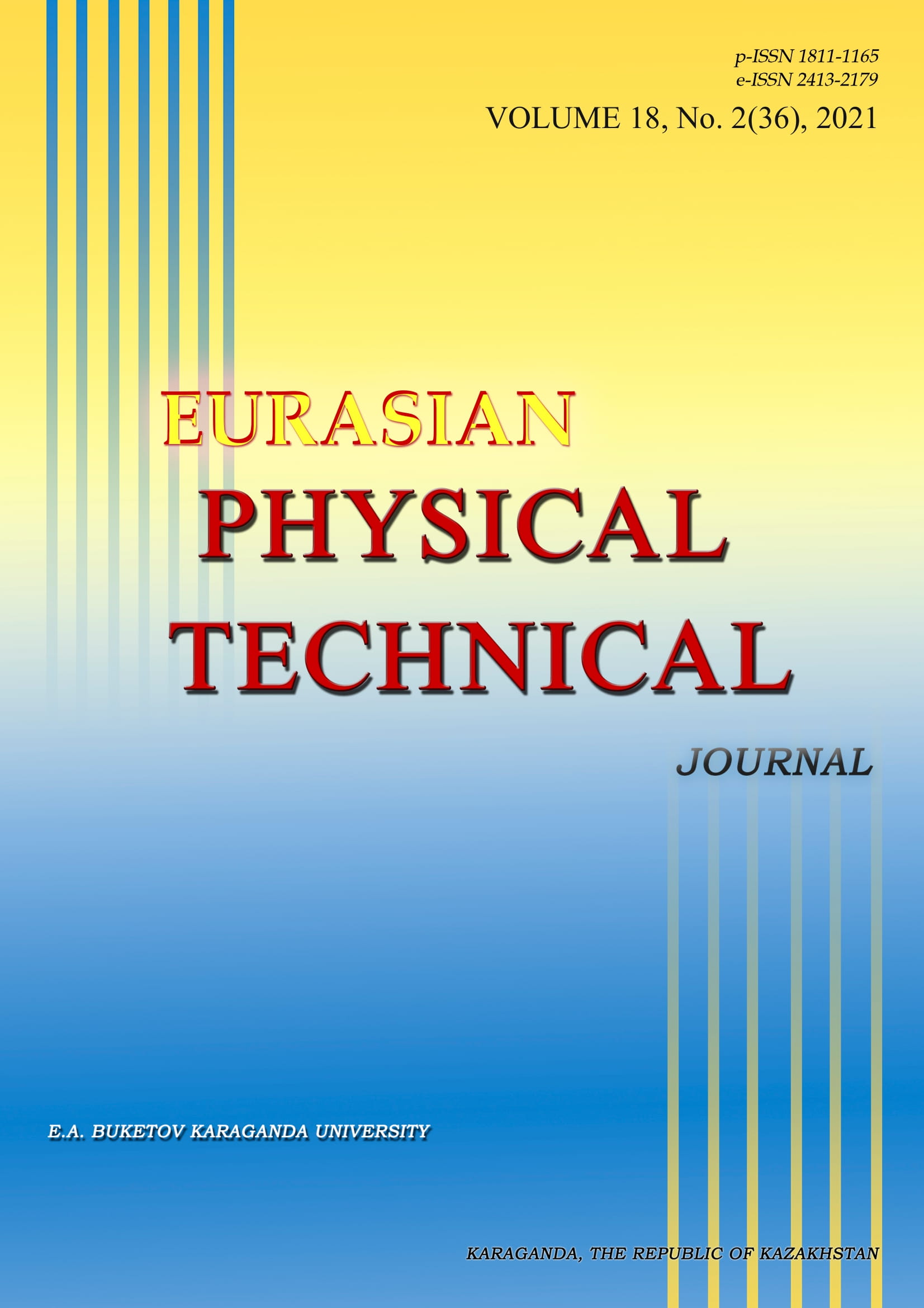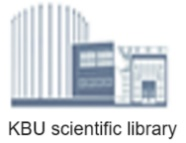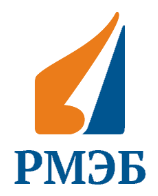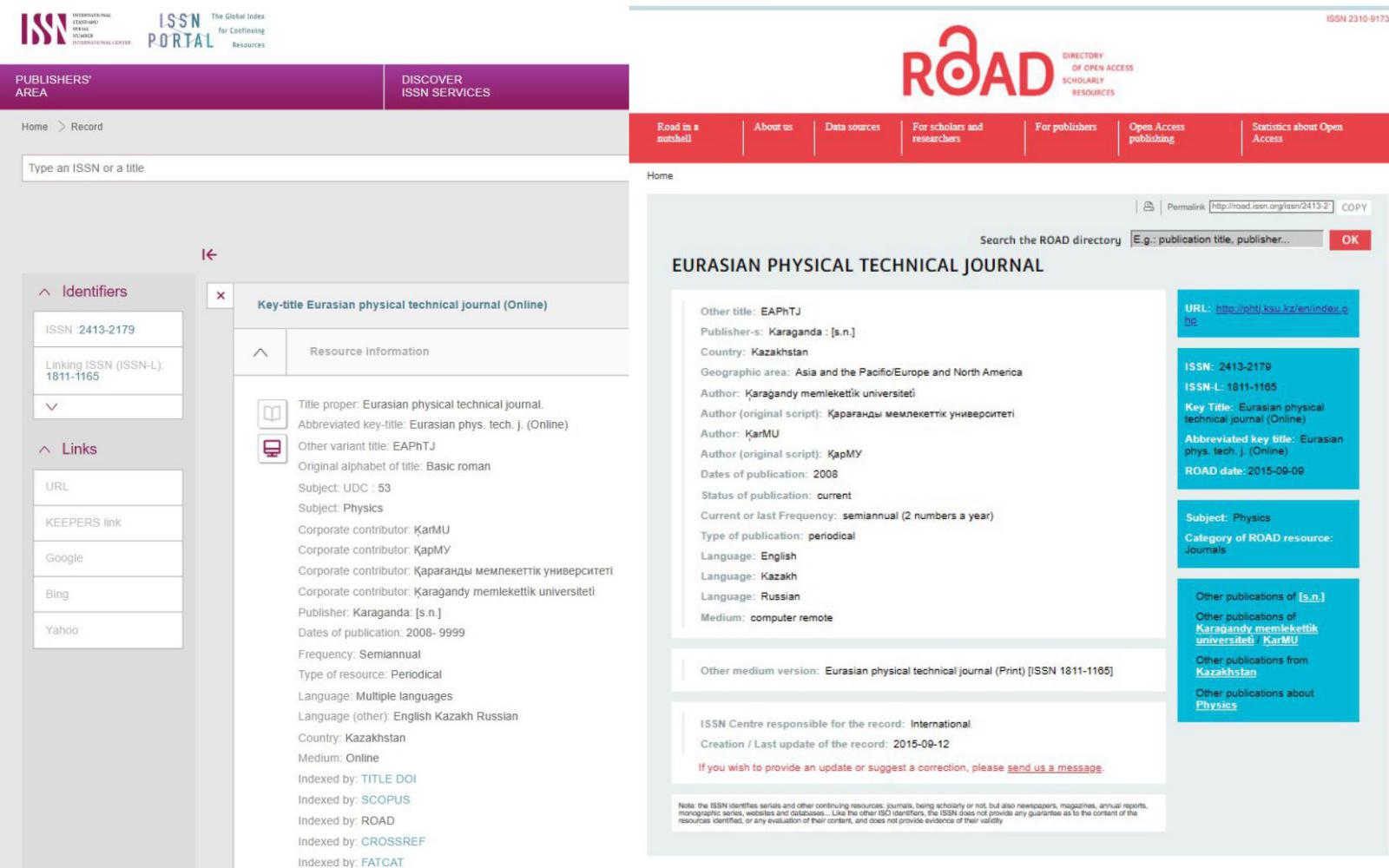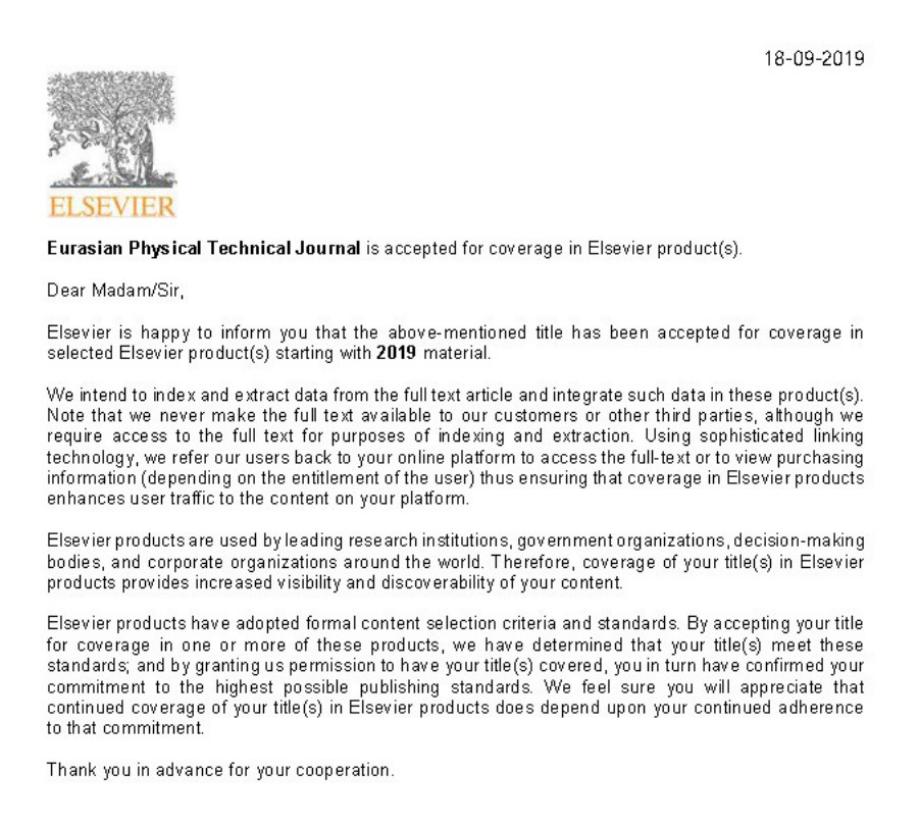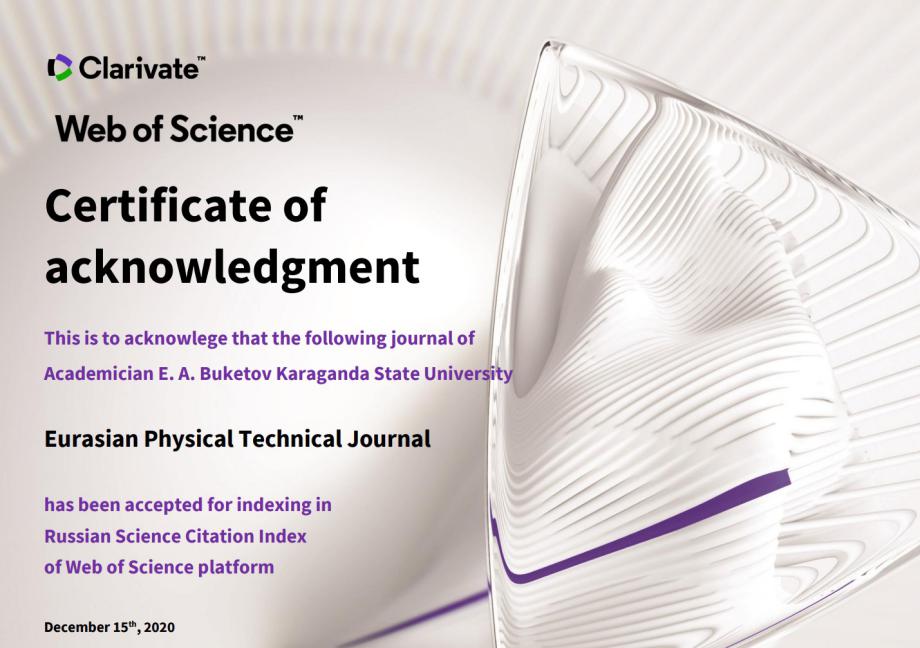"DETERMINATION OF CRITICAL DOSES OF RADIATION DAMAGE TO ALN CERAMIC UNDER IRRADIATION OF HELIUM AND HYDROGEN IONS"
DOI:
https://doi.org/10.31489/2021No2/23-28Keywords:
aluminum nitride, ceramics, structural materials, radiation damage, helium swelling, embrittlement.Abstract
The work is devoted to the study of the radiation damage kinetics to heat-conducting, insulating and mechanical properties in polycrystalline ceramics based on aluminum nitride under irradiation of helium and hydrogen ions, as well as the determination of critical doses that cause maximum irreversible consequences. The choice of ions for irradiation is due to the ability to simulate the radiation damage processes during the accumulation of helium and hydrogen ions in the structure of the near-surface layer with the subsequent formation of gas-filled bubbles. During the studies carried out, it was found that at doses of irradiation with helium ions above 1х1017 ion/cm2, there is a sharp deterioration in thermal conductivity and a decrease in ceramic resistance, which is associated with the onset of the formation of helium bubbles and partial embrittlement of the near-surface layer. However, an increase in the radiation dose above 5x1017 ion/cm2 does not lead to significant changes in thermal conductivity and insulation characteristics, which indicates the effect of radiation damage accumulation and a decrease in the ceramic degradation rate. In contrast to irradiation with helium ions, irradiation with hydrogen ions to doses higher than 1-3х1017 ion/cm2 does not lead to significant changes in the thermal insulation characteristics, which indicates the ceramic resistance to hydrogen absorption processes.
References
"1 Aitkaliyeva A., et al. Irradiation effects in Generation IV nuclear reactor materials. Structural Materials for Generation IV Nuclear Reactors. Woodhead Publishing, 2017, pp. 253 – 283.
Milosavljević M., et al. A comparison of Ar ion implantation and swift heavy Xe ion irradiation effects on immiscible AlN/TiN multilayered nanostructures. Materials Chemistry and Physics. 2012, Vol.133, pp. 884 -892.
Zinkle S.J., et al. Microstructure of Swift Heavy Ion Irradiated SiC, Si 3 N 4 and AIN. MRS Online Proceedings Library. 2000, 650.1, pp. 3191 – 3196.
Crespillo M.L., Agulló-López F., and Zucchiatti A. Cumulative approaches to track formation under swift heavy ion (SHI) irradiation: Phenomenological correlation with formation energies of Frenkel pairs. Nuclear Instruments and Methods in Physics Research section B: Beam Interactions with Materials and Atoms. 2017, Vol. 394, pp. 20 – 27.
Al-Douri Y. Structural phase transition of boron nitride compound. Solid state communications. 2004, Vol.132.7, pp. 465 – 470.
Lushchik A., et al. Distinctive features of diffusion-controlled radiation defect recombination in stoichiometric magnesium aluminate spinel single crystals and transparent polycrystalline ceramics. Scientific reports. 2020, pp.1 – 9.
Yang Wei, et al. Preparation and performance of alumina ceramic coating doped with aluminum nitride by micro arc oxidation. Ceramics International. 2020, Vol. 46.10, pp. 17112 – 17116.
Tuleushev A.Z., et al. Ion charge influence on the molecular structure of polyethylene terephthalate films after irradiation with swift heavy ions. Crystals. 2020, Vol.10.6, pp. 479.
Li Shuyao, et al. Manipulating the triboelectric surface charge density of polymers by low-energy helium ion irradiation/implantation. Energy & Environmental Science. 2020, Vol.13.3, pp. 896-907.
Harris J.H. Sintered aluminum nitride ceramics for high-power electronic applications. JOM. 1998, Vol. 50.6, pp. 56-60.
Popov A.I., Balanzat E.F centre production in CsI and CsI–Tl crystals under Kr ion irradiation at 15 K. Nuclear Instruments and Methods in Physics Research Section B: Beam Interactions with Materials and Atoms. 2000, Vol. 166, pp. 545-549.
Xiao Xiazi, and Long Yu. Nano-indentation of ion-irradiated nuclear structural materials: A review. Nuclear Materials and Energy. 2019, pp. 100721-100730.
Murty K.L., Charit I. Structural materials for Gen-IV nuclear reactors: Challenges and opportunities. Journal of Nuclear Materials. 2008, Vol. 383, pp. 189-195.
Lushchik A., et al. Influence of complex impurity centres on radiation damage in wide-gap metal oxides. Nuclear Instruments and Methods in Physics Research Section B: Beam Interactions with Materials and Atoms. 2016, Vol. 374, pp. 90-96.
Singh Fouran, et al. Micro-Raman investigations on zirconium oxide film during swift heavy ion irradiation to study crystalline-to-crystalline phase transformation kinetics by cascade overlap model. Journal of Applied Physics. 2019, Vol. 126.2, pp. 025901-025910.
Kozlovskiy A.L., et al. Radiation resistance of thin TiN films as a result of irradiation with low-energy Kr14+ ions. Ceramics International. 2020, Vol. 46.6, pp. 7970-7976.
Gladkikh T., et al. Changes in optical and structural properties of AlN after irradiation with C2+ ions of 40 keV. Vacuum. 2019, Vol. 161, pp.103-110.
Kimura Kazuie, Sumit Sharma, and Anatoli Popov. Fast electron–hole plasma luminescence from track-cores in heavy-ion irradiated wide-band-gap crystals. Nuclear Instruments and Methods in Physics Research Section B: Beam Interactions with Materials and Atoms. 2002, Vol. 191, pp. 48-53.
Averback R.S., et al. Defects in ion implanted and electron irradiated MgO and Al2O3. Radiation effects and defects in solids. 1995. Vol. 136.1-4, pp. 169-173.
Kotomin E.A., Kuzovkov V.N., and Popov A.I. The kinetics of defect aggregation and metal colloid formation in ionic solids under irradiation. Radiation effects and defects in solids. 2001. Vol. 155.1-4, pp. 113-125.
Tang Jinjin, et al. Effect of proton irradiation on the mobility of two-dimensional electron in AlGaN/AlN/GaN high electron mobility transistors at low temperature. Journal of Vacuum Science & Technology B, Nanotechnology and Microelectronics: Materials, Processing, Measurement, and Phenomena. 2020, Vol. 38.2, pp. 023202-023210.
Qarra H.H., et al. Heavy ion irradiation damage in Zr2AlC MAX phase. Journal of Nuclear Materials. 2019, Vol.523, pp. 1-9.
Yano T., et al. Neutron irradiation effects on isotope tailored aluminum nitride ceramics by a fast reactor up to 2× l026 n/m2. Journal of Nuclear Materials. 2004, Vol. 329, pp. 1471-1475.
Bakan Emine, et al. High-temperature materials for power generation in gas turbines. Advanced Ceramics for Energy Conversion and Storage. 2020. Vol. 3, pp. 62-70.
Kozlovskiy A.L., et al. The influence of the energy of incident protons on the defect formation and radiation resistance of AlN ceramics. Solid State Sciences. 2020. Vol. 107, pp. 106367-106380.
Kozlovskiy A., et al. Dynamics of changes in structural properties of AlN ceramics after Xe+ 22 ion irradiation. Vacuum. 2018, Vol. 155, pp. 412-422.
Patino M.I., Doerner R.P., and Tynan G.R. Exposure of AlN and Al2O3 to low energy D and He plasmas. Nuclear Materials and Energy. 2020, pp. 100753-100760.
Werdecker Waltraud, and Fritz Aldinger. Aluminum nitride-an alternative ceramic substrate for high power applications in microcircuits. IEEE transactions on components, hybrids, and manufacturing technology. 1984, Vol. 7.4, pp. 399-404.
Bocanegra-Bernal M.H., and Matovic B. Mechanical properties of silicon nitride-based ceramics and its use in structural applications at high temperatures. Materials Science and Engineering: A. 2010, Vol.527.6, pp. 1314-1338.
Kozlovskiy A., et al. Optical and structural properties of AlN ceramics irradiated with heavy ions. Optical Materials. 2019, Vol. 91, pp. 130-137.
Kozlovskiy A., et al. Influence of He-ion irradiation of ceramic AlN. Vacuum. 2019. Vol. 163. pp. 45-51.
Zdorovets M., et al. Study of helium swelling in nitride ceramics at different irradiation temperatures. Materials. 2019, Vol. 12.15, pp. 2415-2430.
Uglov V.V., et al. Surface blistering in ZrSiN nanocomposite films irradiated with He ions. Surface and Coatings Technology. 2020, pp. 125654-125660.
Uglov V.V., et al. Blistering in Helium-Ion-Irradiated Zirconium, Aluminum, and Chromium Nitride Films. Journal of Surface Investigation: X-ray, Synchrotron and Neutron Techniques. 2020, Vol.14, pp. 359-365.
Evans J.H. An interbubble fracture mechanism of blister formation on helium-irradiated metals. Journal of Nuclear Materials. 1977. Vol. 68.2, pp. 129-140.
"

